We went to France many times when I was a small child and although I remember an overall feeling of sun and happiness simply because we were on holiday, my overriding lovely memory is of warm summer evenings outside, drinking a bottle of Orangina through a coloured straw. Not only was it a sharp and tangy and sweet all-at-the-same-time kind of a drink it also came in a uniquely shaped glass bottle with a pitted surface reminiscent of orange peel; I always thought I was so sophisticated!
The first incarnation of the massively popular fizzy drink was called Naranjina, which had been created by a Spanish pharmacist, Dr Trigo. He met Léon Beton, an Algerian shopkeeper, at a Marseille fair in 1936 and discovered that his new colleague had been exploring ways to utilise the copious amount of oranges growing in Algeria’s plantations. Beton purchased Trigo’s drink formula and took it back to his own country.
In 1947 Beton’s son, Jean-Claude, took over his dad’s juice company and in January 1951 he relaunched the newly-named Orangina , marketing it in Europe and North Africa. French soldiers fighting in the Algerian War became particularly fond of its refreshing qualities.
Beton brought Orangina, in its new, now iconic, 8-ounce bottle, to France after the Second World War, introducing it to their slowly remerging café culture. Its bright, bubbly flavour – originally a mix of pulp, sugar and citrus juices (mostly orange but also smaller quantities of lemon, mandarin and grapefruit) and to which Beton had now added sparkling water and essential flavouring oils - was a hit and it continued to grow in popularity. He did come up with some resistance to the bottle shape from shop, restaurant and café owners who found it difficult to stock them in their fridges and on shelves. Beton junior refused to change the shape and it is now instantly recognisable.
His marketing campaign for Orangina included posters designed by the illustrator Bernard Villemot, an artist known for his confident use of simple lines and bright colours, particularly in his advertising work for Air France. Villemot came up with well-recognised drawings which included Orangina bottles and a length of orange peel which became a table parasol, a face, a hat and many other things. All were placed against a blue background, evoking feelings of sky and sunshine, reminiscent of the Mediterranean. (Orange peel had to be used rather than a picture of a complete orange as France, at the time, had strict laws which stated this wasn’t allowed because of the low proportion of actual orange juice in the drink.)
The campaign worked; Beton sold approximately 50 million bottles of Orangina in 1957. He continued to sell the drink successfully and in 1978 he expanded to the United States under a new name, Orelia (although this was changed back to Orangina in 1985).
In 1984 he sold Orangina to Pernod Ricard, a liqueur company, although he remained company chairman until 1989 when he retired. It was then passed to several other beverage businesses throughout the next couple of decades (Coca Cola tried to buy it twice, both unsuccessfully) and it now, across the majority of the globe, sits under a subsidy of Japanese company Suntory, who also own various other well-known brands, such as Ribena, Lucozade and energy drink V. In the US, however, it is owned by the Dr Pepper Snapple Group and in Canada by Canada Dry Motts Inc.
A distinctive feature that Orangina has always used in its advertising is the theme of ‘shaking the bottle’ to mix the fizz and the flavour. One such television advert was run in the 1980s: a woman sits at an outdoor café, an Orangina bottle on the table in front of her. The juice inside the bottle appears to be sleeping: it’s snoring and there are cartoon ‘zzzzzs’ rising up from it. A man gets up from a nearby table and walks over to her. He shakes the Orangina bottle and the drink fizzes to life, with cartoon fruit leaping out of the top of it. The voiceover says ‘Shake the bottle, wake the drink’. This was a very memorable and successful ad campaign; another, shown in the UK in 2008, was equally memorable but for all the wrong reasons…Rather than describe it here you’ll have to look it up on Google but suffice to say it won ‘Freakiest Advert of 2008’ (yes, there is an award for that) and came 7th in The Guardian’s list of ‘Worst TV adverts of 2008’. Having researched it myself I can’t begin to imagine what the ad company was thinking when they came up with the idea and be warned: once you’ve seen it you can’t UNSEE it. (Definitely don’t watch it just before you go to bed either – I won’t be held responsible for your dreams if you do.)
The range has expanded in flavours: alongside the original orange there is now Red Orange (made with – fairly obviously – red oranges) and Tropical (the original citrus fruits plus mango, pineapple, passion fruit and apple) as well as a Light version, which claims it has ‘almost no calories’. And, even more excitingly (if you like lemons, that is) Suntory has recently launched a new drink called Lemongina! Admittedly, it’s only on sale in Japan at the moment but it’s in a bottle shaped a bit like a lemon!
Orangina is still sold in the 8oz dimpled and rounded bottles, although there is also an additional 1.5 litre bottle. This is made of plastic and not glass but it still has the textured effect. The smaller bottle has become a personality in its own right; now called ‘Bulby’ and sporting a pair of dark shades it has its own Twitter account (@Orangina). The Orangina brand has also been liked over 1.5 million times on Facebook.
Orangina – a lifetime of sun-kissed holidays. In a cute, dimply, social media-savvy bottle.




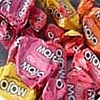


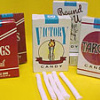
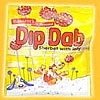

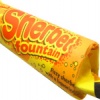
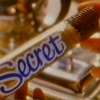
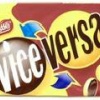
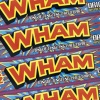
Do You Remember Orangina?
Do You Remember Orangina?